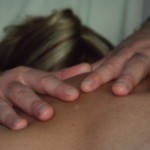So you’re laying on the table and the therapist says that something is stuck. “What is stuck?”, you say.
From my perspective, ‘being stuck’ refers to the tissues I am worki ng on not moving in a healthy manner. It can refer to a limb or joint not moving fluidly or it can have implications on neural gliding, the movement of nerves through the tissues.
ng on not moving in a healthy manner. It can refer to a limb or joint not moving fluidly or it can have implications on neural gliding, the movement of nerves through the tissues.
The Tissues, the art of palpation
It always amazes me that people are surprised that I can feel the differences in their tissues. That ability is called palpation. And like a few other skill sets in my profession, palpation comes with experience. Like any skill, you have to work at the skills to get better.
For anyone that has ever kneaded bread, palpation is a very much like the skill used in kneading bread. Your fingers are acting as eyes and sensing what is going on within the loaf of bread that you are working on. The elasticity of the dough is being sensed by touch. So it is when working with the structures of the body. The fingers are sensing what is underneath. Is it fluid? Does the tissues move freely? Are they dense and thick? All this information is picked up by the sense of touch.
Movement
From the flexibilities of the toes to the rotation of the shoulder, movement or the lack thereof is crucial is determining what is going on within the myofascial matrix of our bodies. If some movement is restricted, that restriction gives the therapist a broader picture of what is going on.
Neural Gliding
Nerves move through healthy tissue. It glides through the myofascial matrix. If it does not move freely, it hurts. Physical Therapists often give patients neural flossing or neural stretches to improve the movement of the peripheral nerves, the nerves in our limbs. As a Myofascial Therapist, the ability of the nerves to glide through tissue is very important. My belief is that many of the common pain patterns that have been identified are because the nerves are “stuck” within the tissues and every time you go to move, you have a particular pattern of pain. Patients often point out that the pain they are experiencing only occurs when they move a certain way. Otherwise, they feel great. Unfortunately, our brain will eventually alter our movement to avoid pain and in doing so, a new pain pattern will emerge from the aberrant movement.
Restorying Movement
Yup, you read that right. The purpose of Myofascial work is to getting things to move properly so that you can continue your life, your personal living narrative. The ability to move. Too live life and enjoy your activities, kids or grandkids. That is what why after more than 20 years of working with people and their myofascial restrictions, I still enjoy what I do.
I love to help people get back to living life without pain and discomfort.
